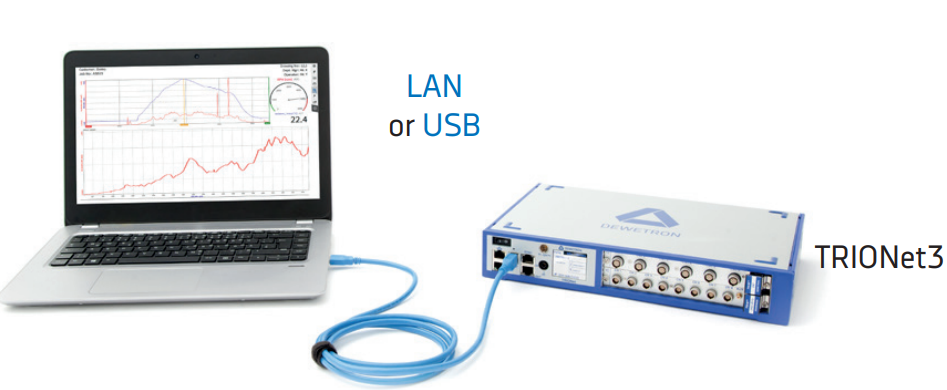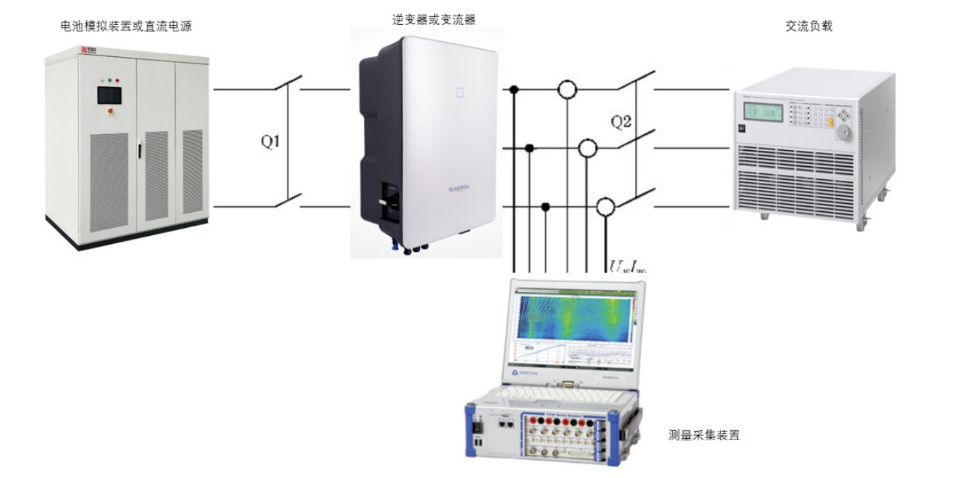In the modern test and measurement field, oscilloscopes and Data Acquisition Systems (DAQ) are two commonly used types of equipment. There are significant differences in their design regarding sampling rate and bit depth. These differences are not only reflections of device performance but are also determined by multiple technical factors such as data processing capability, power consumption management, and application scenarios. This article will delve into the differences between oscilloscopes and DAQ systems concerning bit depth and sampling rate, analyzing the technical reasons behind these distinctions.
Data Acquisition Systems (DAQ) are primarily used for long-term, multi-channel data acquisition and analysis, particularly suited for applications requiring continuous monitoring and recording. Industrial process control, environmental monitoring, and scientific research are typical application domains for DAQ systems. Since the signals in these applications usually change relatively slowly but require high precision, DAQ systems demand relatively lower sampling rates but higher bit depths. High-bit-depth Analog-to-Digital Converters (ADCs) can precisely quantize signals, capturing minute signal changes to meet the needs of high-precision measurement.
The design goal of oscilloscopes, however, is to capture and analyze high-frequency signals and transient events. They are mainly applied for short-duration signal capture requiring extremely high sampling rates, such as electronic circuit debugging, pulse signal detection, and instantaneous event analysis. Consequently, oscilloscopes feature very high sampling rates to ensure accurate capture of rapidly changing signals. Relatively speaking, oscilloscopes have less stringent requirements for sampling precision and typically opt for lower bit depths (e.g., 8-bit or 12-bit).
Different application scenarios directly influence the choice of device sampling rate and bit depth. However, this choice depends not only on application requirements but is also constrained by the internal design and technical implementation of the devices. The device's sampling rate and bit depth must not only meet operational needs but also find a balance between hardware design and performance limitations.

Figure 1 DAQ Board with Multiple Channels
In DAQ systems, each board typically features multiple channels, with each channel equipped with its own independent high-bit-depth ADC. Due to this multi-channel configuration coupled with the need for high bit depth, the overall system's power consumption and heat generation are inherently significant. To avoid excessive power draw or thermal overload, DAQ systems usually need to impose appropriate limitations on the sampling rate to ensure overall system stability and efficiency. This design trade-off ensures the system can handle high-precision data simultaneously without performance degradation due to power and thermal management issues.
Oscilloscopes, on the other hand, prioritize high sampling rates in their design to accurately capture high-speed transient events. A high sampling rate means collecting more data points per second, which increases the oscilloscope's power consumption. To control power consumption without sacrificing real-time processing capability, oscilloscopes typically choose lower bit depths. A lower bit depth effectively reduces the amount of data per sample, thereby lowering power consumption and easing thermal management pressures. This ensures the oscilloscope operates efficiently while meeting the demands of high-speed data capture.
Bit depth and sampling rate are closely linked to power consumption and thermal management. Therefore, oscilloscopes and DAQ systems balance performance and energy consumption by constraining bit depth and sampling rate in their designs. However, the choice of bit depth and sampling rate is also influenced by the device's data processing and storage capabilities.
Long-duration acquisition and high-bit-depth designs significantly increase the data processing burden on DAQ systems, as they need to continuously handle large volumes of high-precision data. DAQ systems typically come with an integrated host or connect to an external computer, possessing robust data processing capabilities to meet the challenges posed by long-term, high-precision signal acquisition. This ensures the system maintains stable performance even when faced with massive data volumes, guaranteeing efficient operation. Oscilloscope design emphasizes real-time capture of high-speed signals and has certain limitations regarding long-term monitoring and large-scale data analysis. This is because the oscilloscope's processor is usually built-in and has relatively weaker processing power. To alleviate the burden of high-speed data processing, oscilloscopes typically employ lower bit depths. This helps reduce the pressure of processing data while ensuring the system can efficiently handle the data from high-speed sampling.

Figure 2 DAQ System Used with an External Computer
The large amounts of data generated during signal acquisition put pressure not only on the device's data processing capabilities but also place higher demands on its data storage capacity. The data volume is proportional to the sampling rate, bit depth, and acquisition time: a higher sampling rate, larger bit depth, and longer acquisition time generate more data.
DAQ systems, due to the need for long-duration data acquisition and high-precision (high bit depth) measurement, produce massive amounts of data, resulting in significant storage pressure. Even if the system is equipped with hard drives or memory cards, the storage pressure remains substantial when faced with such enormous data volumes. If the sampling rate were further increased under these conditions, the system would struggle to bear the immense data storage burden. Therefore, DAQ systems often need to appropriately reduce the sampling rate within the constraints of storage capacity to alleviate data storage pressure. In contrast, because oscilloscopes are primarily used for short-duration signal acquisition and have lower bit depths, they can maintain lower storage pressure even at high sampling rates, not requiring excessively large storage space. The oscilloscope's built-in storage is usually sufficient to buffer data for short periods without needing external high-capacity storage devices.
Oscilloscopes and DAQ systems have distinct design emphases. Oscilloscopes achieve precise capture of short-duration, high-speed signals through high sampling rates, making them suitable for transient event analysis. DAQ systems, through high bit depths and multi-channel configurations, can simultaneously acquire data from multiple signal sources, making them ideal for long-term, precise measurement and monitoring of multiple signals. The technical trade-offs between sampling rate and bit depth, combined with application scenarios, data processing capabilities, and storage requirements, directly impact the accuracy of test results and the overall performance of the system.

Figure 3 DAQ System Performing Long-Term, Multi-Channel Current Detection
Doewe Technologies is consistently committed to delivering innovative, unique, and reliable product solutions in the field of data acquisition. We deeply understand that these elements are the cornerstone for enterprises to establish themselves in the market competition. Precisely for this reason, our inspiration for innovation stems from the real application needs of our customers, not merely to showcase flashy product features. Through continuous optimization and enhancement of data acquisition solutions, Doewe Technologies empowers partners to move towards an efficient and precise future. Welcome to choose Doewe Technologies and jointly open a new chapter in data acquisition.